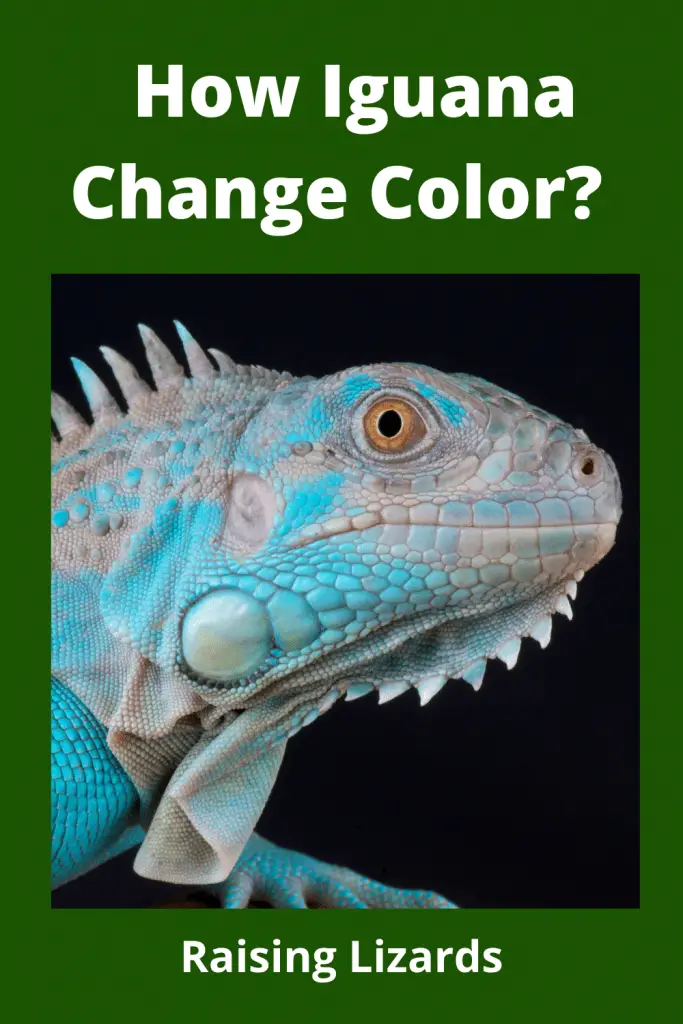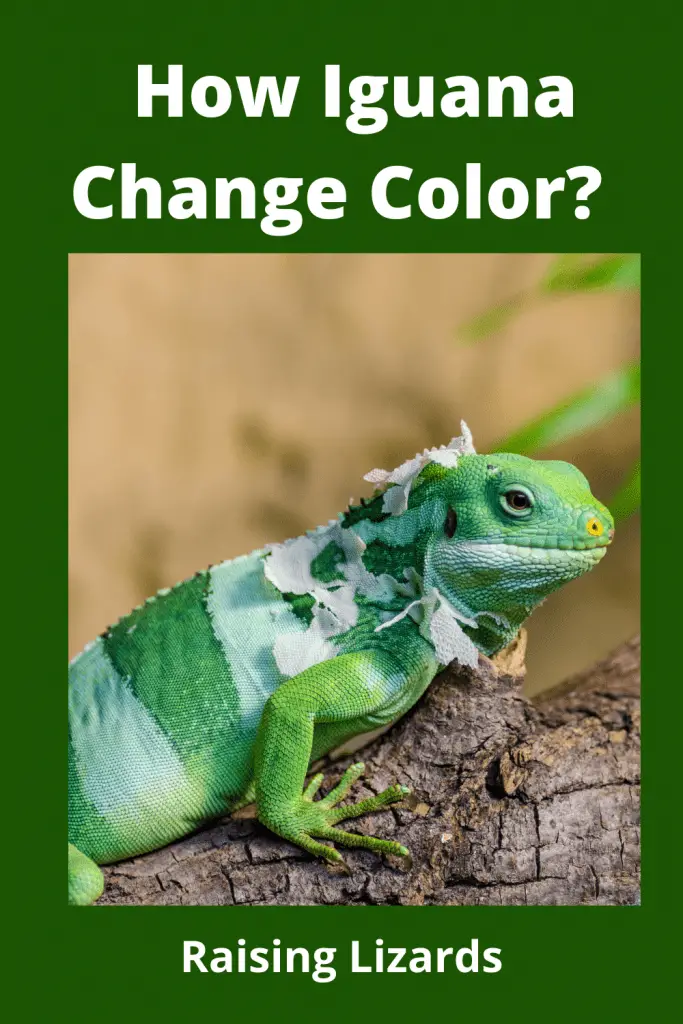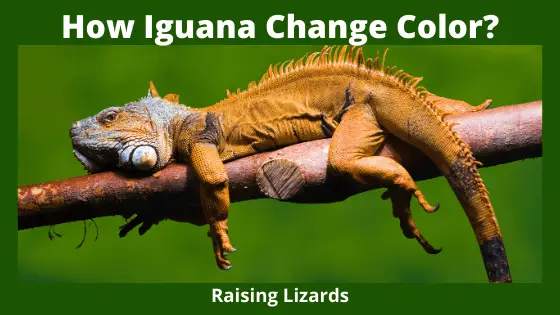How Iguana Change Color
How Iguana Change Color ? Iguanas change color not in response to the environment but from the mood. Iguanas have two types of color cells. Pigment Color and structural color. The color is by the way light reacts off the different cell structures. Crystal Cells spread in distance apart which changes which color reflects off of the Iguanas skin. They tune their cells to change colors by physically changing the spacing of their crystal cells.
- Calms – reverts to natural color
- Excited more orange-yellow and red
- Pressure on the Iguanas skin will change its color
- Breeding they will change colors
- Age will also determine an Iguana’s Relaxed / Calm Color
- Sickness and Disease will affect Iguana’s Color
- Cold – Will become darker to absorb more heat
How Iguana Change Color / Natural Camouflage
The predominant color of green iguanas is green, but can actually range from brilliant green to a pale Blue-Gray. There are genetic variations in the color of iguanas. Some can appear brown in color, while others are almost a turquoise blue. Recently, albino iguanas have been bred in captivity. Green iguana strain from South America has a reddish cast to the head. Jump to 7 Reasons to Have a Pet Iguana
Brown Iguanas
The exceptions are individuals who are predominately brown, tan, and cream-colored. Their markings and shadings are just like other iguanas, just the colors are different. When they are happy, they may have little green in their stripes. They look like a negative photograph of the green iguana. This color variation should not be confused with iguanas who have turned brown due to stress.

Blue Iguanas
There is one area in the iguana range that produces blue iguanas. These iguanas, when happy, exhibit a beautiful turquoise blue color. When they are cold or stressed, they are green. Eyes irises appear deep reddish-brown, and they generally have black skin surrounding the scales on their bodies, heads, tails, and dewlaps. Some may have lots of black in their eyelids. The iguanas, from Peru, should not be confused with baby iguanas from all over the range who show lots of blue when they are hatchlings. The true “blue” iguanas look exactly like the green iguanas when they are babies, so picking a blue hatchling is no guarantee that it will retain any blue as it matures.
Keep in mind that it takes blue and yellow to make the color green. In some reptiles, yellow pigment is slow to appear, making the young species look blue. If you have ever seen photos of the green tree boas, the newborn is a bright, vivid blue, while the adults are green. Delay in yellow pigment formation is what is happening to the “blue” hatchlings that convert green.
Gray Heads
Few iguanas, especially from areas in Central America, have very gray, scaly-looking heads and necks when they become mature. Their rostrums may have tiny horns or very pronounced knobs, and their bodies tend to be quite dark green. Many have stripes that are more blurred or reticulated skin patterns. In their breeding season, the heads and bodies of males are covered with a rusty-colored wash, turning to deep, bright orange when they are excited (during courting and territorial displays).

White Heads
Iguanas that belongs to Columbia tend to have very, pale green heads. People who watch them from a distance, often think that their heads are white. When aroused sexually or territorially, the head color will change within seconds to a pale baby blue.
Red Heads
The iguanas from one area in South America whose heads are normally colored red
Color Changes in Iguanas
When you buy a baby iguana, it is usually a deep, bright vivid green having somebody stripes, and bands around the tail that may or may not meet evenly. Stripes are deep on their body and tail, chocolatey brown. Some iguanas have less body striping, instead of having faint bronze patches that get more visible and deeper in color when they have been basking for a while. Others have a more reticulated patterning, almost like you are seeing them through military camouflage netting, with this reticulation becoming stronger as they reach maturity. The dewlap will be somewhat mottled green and white, with a little black or brown. There are usually small white “epaulettes” on the shoulders, which may or may not be rimmed with blue. A few small raised and flat scales on the neck are blue or white.
As the iguana heads into the start of its second year, the baby colors will have started to mutate into their adult colors. They may lose their bright deep green, fading to a lighter green depending on where they are from. Belly bands, in males, become vivid as sexual maturity is reached to eighteen months of age.
Age Differences
Young iguanas are brighter green or blue having some dark brown striping on the body & tail. The striping pattern of some actually results in a reticulated pattern. This coloring helps to camouflage them as they live among the bright leaves in their natural habitat. As they age, the green color becomes less intense.
The dark patterns, striping, or banding on their bodies and tails become more intense as the iguana reaches approximately 18 months of age. The older iguanas heads convert to pale, appearing Gray or almost white.
Iguana Breeding Season and Dominance
Male iguanas from orange to orange-red coloring in the breeding season. In some iguanas, the orange color may be diffuse over the entire body. In others, the orange color can be concentrated in some areas including the dewlap, spikes, body, and legs. Female iguanas can also form orange coloration, though it is usually less intense.
Dominant males and females often retain the orange color past the breeding season. The orange color will persist if there are other iguanas present, or even dogs, cats, and people, over whom the iguana feels dominant.
Iguana Environment
The environment, especially temperature can influence the color of an iguana. Iguanas tend to become darker if they are cold. The darker color helps them absorb more heat. Color change in response to temperature is termed as “physiological thermoregulation.” In addition to the darker color, an iguana may develop dark, wavy lines on its head or body if it becomes chilled.
Iguanas kept in too warm of an environment that may become lighter in color.
Iguana Shedding
Several weeks before shedding, an iguana’s skin becomes dull and take on a gray or yellowish-gray cast. Unlike snakes, iguanas, and other lizards do not shed the skin over their whole surface at once. White patches will be visible where the skin loosens, just before the shed.
Iguana Diseases
Iguanas having liver disease appear yellow, particularly their mucous membranes. This yellow color should not be confused with the yellow cast that may appear prior to shedding. Red mite infestations may cause some scales on the skin to become raised and black. These are generally found on the ventral abdomen (belly) and limbs, and should not be confused with the normal striping or reticulated pattern. Darker raised areas can also be a result of fungal infections.
The skin over injuries looks pink, smooth, and scaleless. Burns often appear black. Every shed makes the affected area become smaller. The new scales may be smaller and darker in color than neighboring scales.
Bacterial infections of the skin often termed “blister disease,” “scale rot,” or “vesicular dermatitis,” can at first cause blisters of the skin, and then turn the skin a dark brown to black color. These infections are mainly due to poor cage hygiene or moisture in the environment. This disease can be fatal.
Increased parasite infestations, gastrointestinal obstructions or constipation, malnutrition, and other chronic diseases can lead iguana to become mustard yellow to dark brown or almost black in color. These color changes generally affect the body and head first, then extend to the limbs and tail.
These color changes can also occur due to other stressors such as:
- A poor environment such as wrong temperature, humidity, photoperiod, inadequate enclosure, poor hygiene.
- Fear due to a dominant cage mate, household pet, or person
- Some changes in household routine such as what may occur with moving, the addition of new pets or a baby, holiday festivities, or long absences

Any color changes in your iguana, not related to breeding season or shedding, are an indication that your iguana may be ill and should be examined by a veterinarian

